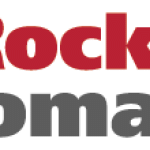- Domeniu: Automation
- Number of terms: 8432
- Number of blossaries: 0
- Company Profile:
Rockwell Automation, Inc. provides industrial automation power, control, and information solutions.
A solid-state uni-directional latching switch.
Industry:Automation
The ability of a processor or system to run multiple software tasks (programs) apparently at once, usually priority-scheduled and/or interrupt-driven.
Industry:Automation
A character that separates items of data. When placed before and/or after a string of data, causes the data to be interrupted in a predetermined manner.
Industry:Automation
A speed range in which the motor is capable of delivering a constant torque subject to cooling limitations of the motor.
Industry:Automation
The ability of the drive to withstand currents beyond the system’s continuous rating. It is normally specified as a percentage of full load current for a specified time period. Overload capacity for “standard industrial dc motors” is defined by NEMA as 150% of rated full load current for one minute.
Industry:Automation
A check of the sum of the parity bit plus all of the data bits in each word to determine whether the sum is even or odd. A failure of the parity check indicates that a data bit has been corrupted.
Industry:Automation
A standard bar code type for retail packaging in the United States. See EAN
Industry:Automation
The ability to do addition, subtraction, multiplication, division, or advanced math functions within a processor.
Industry:Automation
A circuit design feature of a dc motor shunt field supply that reduces the supply voltage output after a predetermined period of time. On many field supplies, this means a 50% reduction in output voltage 2 to 3 minutes after machine shutdown (idle). A field economy circuit serves to reduce standby power consumption and prolong the insulation life of the motor field windings.
Industry:Automation
A standard high-speed parallel interface defined by the X3T9.2 committee of the American National Standards Institute (ANSI). An SCSI interface is used for connecting computers to peripheral devices, such as hard-disk drives and printers, and to other computers and local area networks requiring high-speed data transfer.
Industry:Automation
